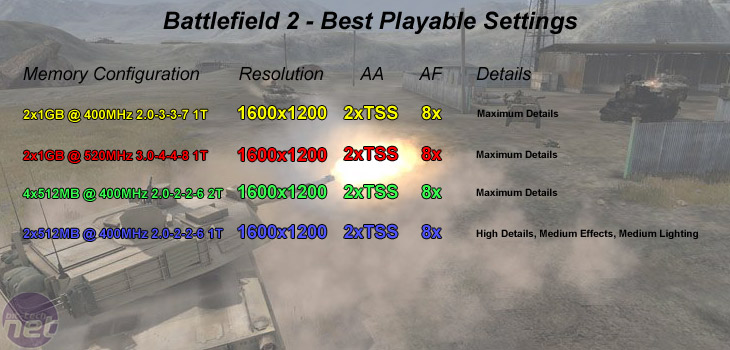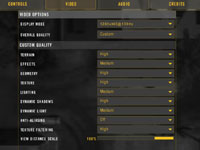Battlefield 2
Publisher: Electronic ArtsBattlefield 2 features an all-new game engine based on the DirectX 9.0 API. There is no Shader Model 3.0 support, but the majority of hardware will use a Shader Model 2.0++ mode that includes support for Normal Maps, Parallax Mapping, Full-Resolution Dynamic Shadowing, Post Processing and Fog.
We played three five-minute segments of the 'Strike at Karkand' map, reporting the median frame rate. We found that there was no ready way to duplicate testing situations manually in this game, so we felt that taking a typical slice of action from the game was the best way to report our findings. We controlled Anti-Aliasing from inside the game, while Anisotropic Filtering was set to 8xAF when the 'Texture Filtering' option was set to 'High'.
Below is a table of the best-playable settings that we found best for each memory configuration. In this title, we found that 25 frames per second minimum and a target of 55 frames per second (or higher) for the average frame rate delivered a good gaming experience on these memory configurations.


With the two 512MB Corsair XL Pro modules, we found that we had to lower the in-game details to prevent hitching. Both lighting and effects had to be lowered to 'medium' in order to prevent the hitches when new textures were loading. The antialiasing details remained the same, but it was not possible to experience smooth gameplay with maximum details and only 1GB of memory.

MSI MPG Velox 100R Chassis Review
October 14 2021 | 15:04










Want to comment? Please log in.